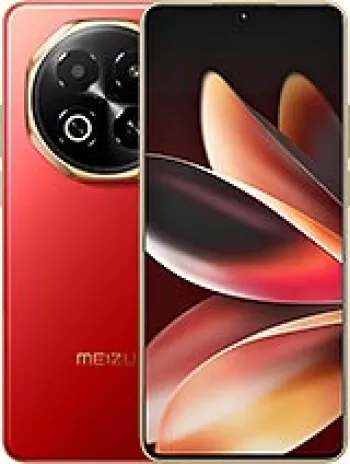
Design and Build Quality
The Meizu E2 boasts a sleek and modern design, characterized by its smooth lines and lightweight body. Measuring 153.7 x 75.7 x 7.5 mm and weighing only 155 grams, the device offers a comfortable grip and ease of use. The phone features a metal body that provides durability and a premium feel, available in classic colors such as black, gold, and silver. The front panel is dominated by the 5.5-inch display, with the front-mounted fingerprint sensor integrated into the home button, adding a layer of security and convenience.
Display
The Meizu E2 is equipped with a 5.5-inch IPS LCD display with a resolution of 1080 x 1920 pixels, resulting in a pixel density of approximately 403 ppi. This high-resolution display ensures vibrant colors and sharp details, making it ideal for media consumption, gaming, and daily tasks. The display’s aspect ratio of 16:9 and screen-to-body ratio of about 71% contribute to a decent viewing experience without compromising on ergonomics.
Performance and Hardware
Under the hood, the Meizu E2 houses a Mediatek MT6757 Helio P20 chipset, built on a 16nm process. This is complemented by an Octa-core processor consisting of four high-performance Cortex-A53 cores clocked at 2.3 GHz and four power-efficient Cortex-A53 cores clocked at 1.6 GHz. The Mali-T880MP2 GPU handles graphical tasks. The device was available in several memory configurations, including 2GB RAM with 16GB storage, 3GB RAM with 32GB storage, and 4GB RAM with 64GB storage, all with support for expandable storage via a microSDXC card slot, shared with the SIM slot.
Camera
The camera setup of the Meizu E2 includes a single 13 MP rear camera with an f/2.2 aperture and phase detection autofocus (PDAF). It is equipped with a Quad-LED dual-tone flash and supports features like HDR and panorama, allowing for a range of photographic effects and enhanced lighting in low-light conditions. The rear camera is capable of recording videos at 1080p@30fps. On the front, there is an 8 MP selfie camera with an f/2.0 aperture, also capable of 1080p video recording.
Battery and Charging
Powering the Meizu E2 is a non-removable 3400 mAh Li-Ion battery. The device supports 24W wired charging, allowing for quick top-ups. Given the hardware and display specifications, the battery capacity is expected to offer adequate longevity for daily usage such as browsing, streaming, and light gaming, although actual battery life would depend on individual usage patterns.
Software and User Experience
Out of the box, the Meizu E2 runs on Android 7 (Nougat) with Meizu's custom Flyme 6 user interface. Flyme 6 offers a unique user experience with its intuitive navigation, customizable settings, and a fluid user interface. The software experience is enhanced by features like the front-mounted fingerprint sensor which supports gestures, allowing for quick access to different phone functions.
Connectivity and Additional Features
The Meizu E2 supports multiple connectivity options including 4G LTE, Wi-Fi 802.11 a/b/g/n with dual-band support, Bluetooth 4.2, and positioning systems like GPS and GLONASS. The device, however, does not support NFC or a radio. For physical connections, it includes a microUSB 2.0 port for charging and data transfer. Offering dual-SIM functionality, the E2 can accommodate two Nano-SIM cards, although the second slot doubles up as the microSD slot.
Sensors and Security
In terms of sensors, the Meizu E2 is equipped with a suite of options including a front-mounted fingerprint sensor, accelerometer, gyro, proximity sensor, and compass. These sensors not only enhance security and usability but also improve the overall interactive experience with the device.
Conclusion
The Meizu E2, released in April 2017, offers a well-rounded package with its appealing design, capable performance, and versatile camera system. While it may lack some modern features like NFC and USB-C, its overall specifications make it a suitable choice for users looking for a reliable mid-range smartphone that balances performance with price. Despite being discontinued, it remains a testament to Meizu's capability to deliver innovative and user-friendly technology solutions.
Key Features of Meizu E2
- Supports GSM, HSPA, and LTE networks for broad connectivity.
- Lightweight design, weighing only 155 g.
- 5.5-inch IPS LCD display with full HD resolution of 1080 x 1920 pixels.
- Powered by Mediatek MT6757 Helio P20 chipset and octa-core CPU for efficient performance.
- Available with multiple memory configurations: up to 64GB internal storage with 4GB RAM.
- 13 MP main camera with Quad-LED dual-tone flash and 8 MP selfie camera, both capable of 1080p video recording.
- Includes a fingerprint sensor for enhanced security.
- Built-in non-removable 3400 mAh battery with 24W fast charging capability.
- 3.5mm audio jack and dual-band Wi-Fi support for diverse audio and connectivity options.
Disadvantages of Meizu E2
- Discontinued model, thus limited support and updates.
- Uses microUSB 2.0 instead of the newer USB-C standard.
- No NFC support which might be limiting for mobile payment services.
- Lacks a dedicated slot for microSD, sharing the slot with the second SIM.
- No radio functionality for FM broadcast access.
- Unspecified 4G LTE bands might affect compatibility with some carriers.
- Older Android version (7 Nougat) without the latest features and security updates.




View Also
More Phones
All Rights Reserved +14046 Phones © Mobilawy 2025

























